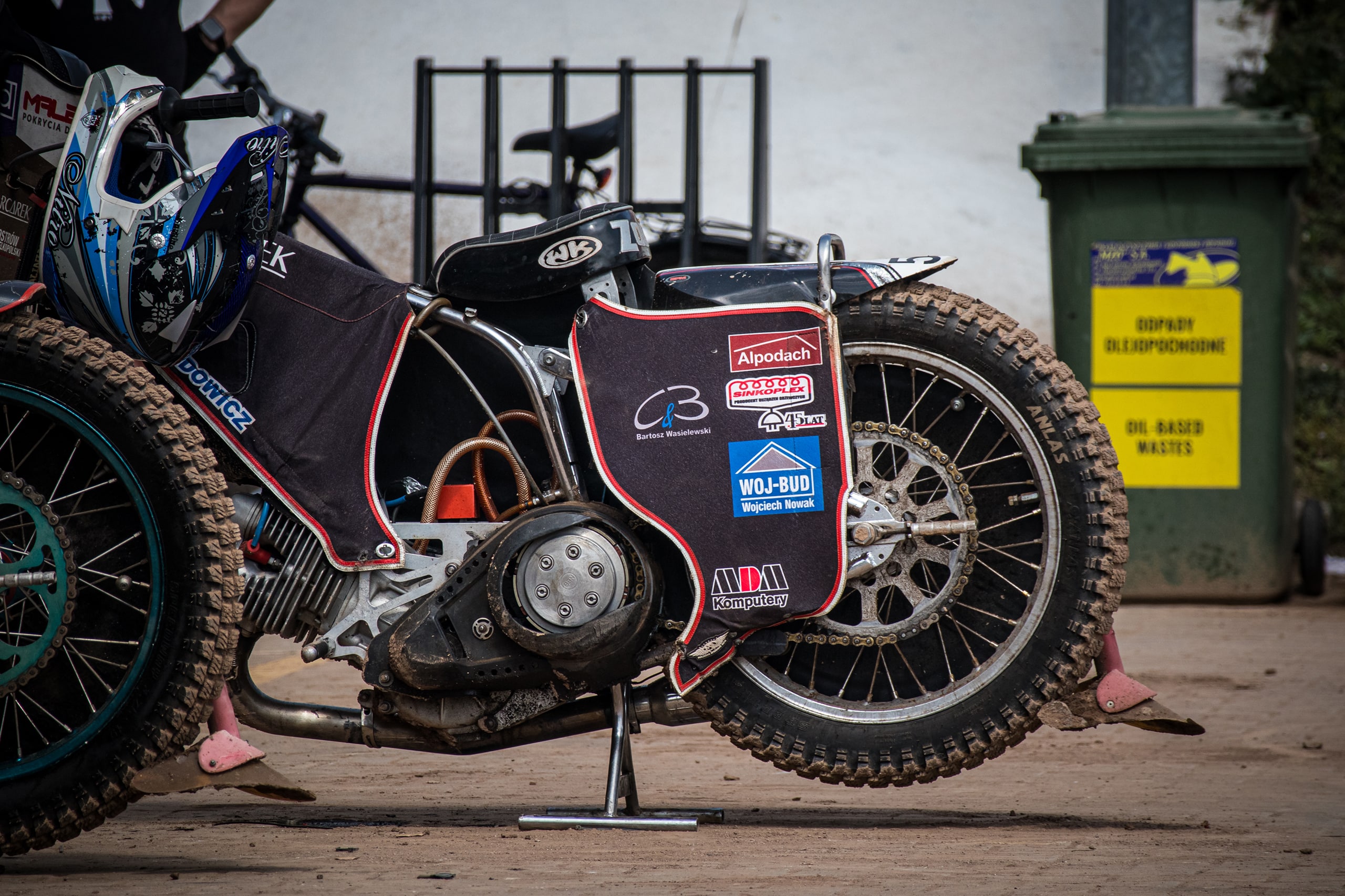No brakes. 170 pounds. 0–60 mph in three seconds. Speedway bikes look insane—but they’re built for pure control. Compared to MotoGP, motocross, drag racing, or flat track, nothing comes close.
No Brakes, No Fear
In MotoGP or motocross, brakes are essential. Speedway bikes have none. Riders throw their machines sideways at 70–80 mph, slowing only with throttle, engine, and body balance. It looks like chaos, but it’s total control.
Starts Decide It All
Races last just 60 seconds. The start is everything. Riders react to the gate in 0.2 seconds—as fast as drag racers. But here, four bikes launch together and hit the same corner, inches apart, with no brakes to save them.
Methanol Fuel, Tiny Tank
Speedway bikes run on pure methanol for sharper throttle and reduced fire risk. Tanks hold half a gallon (2 liters)—exactly one race’s worth. When the flag drops, the fuel is gone.
One Gear, Infinite Adjustments
No gearbox, only one fixed gear. But riders endlessly tweak sprockets, ignition, and carb jets. Even the same track demands different setups depending on weather or dirt prep. Many keep setup diaries for every change. MotoGP uses laptops; speedway relies on hands-on skill.
Tires That Last Two Heats
Tires look like motocross rubber but wear fast. One side = one race. Flip for the next, then it’s done—trashed, used for training, or sold to amateurs. In MotoGP or motocross, tires last an entire event.
Lightweight Power
The bike weighs 170 lbs (77 kg) and makes about 80 horsepower. Riders themselves are often light—some 110–120 lbs (50–55 kg), though many are heavier. That power-to-weight ratio beats most superbikes. On a dirt oval with 60–80 meter straights, speeds still hit 80 mph (130 km/h) in seconds.
Engines and Costs
Engines are limited to 500 cc but tuned far beyond stock. Top riders own a dozen, swapping constantly. Each costs $5,000–$10,000 USD and needs service after just a few races. Before every heat, engines are warmed up, cooled with fans, and protected by rev limiters. It’s a constant cycle of precision and expense.
Minimalist Machines, Maximum Skill
No speedometer, no tachometer, no traction control. Just clutch, throttle, and nerve. In Poland’s top league, limited telemetry is allowed—speed, reaction time, acceleration—but setups remain personal. What works for one rider may fail for another.
The Life Behind the Bike
Riders bring two or three bikes per meeting, each tuned only for them. They drive their own vans, often backed by car dealership sponsors, packed with spares and tools. Teams usually include two or three mechanics, sometimes more. Unlike MotoGP stars racing once a weekend, speedway pros ride several nights a week in different countries. The busiest log 100+ meetings between March and October—nonstop travel, wrenching, and pressure.
Speedway vs. Other Motorsports
- MotoGP: brakes, electronics, pit strategy, long races.
- Motocross: jumps, suspension, endurance.
- Drag racing: insane acceleration, straight line.
- Flat track: the closest U.S. cousin, but heavier bikes with brakes.
- Speedway: lighter, brakeless, sideways at 80 mph—minimalism pushed to the extreme.
Tough Riders, Risky Sport
No brakes, close racing, constant risk. Crashes happen often, but speedway riders are tough. Many dust themselves off and race again minutes later. Think rodeo grit mixed with motorsport precision.
Speedway bikes are the most extreme minimalist machines in motorsport. No brakes. One gear. Half a gallon of fuel. Sideways at 80 mph.
It’s not just racing—it’s adrenaline, chaos, and absolute control.
👉 Watch it yourself on motospeedway.com.

